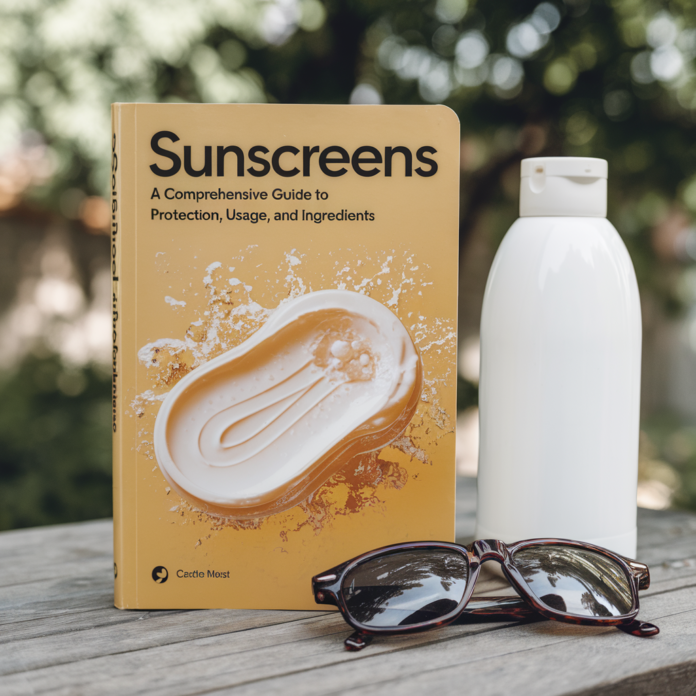Sunscreens: How They Work, How to Use Them, and Ingredients Explained
Sunscreen is not solely a summertime product; it plays an important role in taking care of one’s skin all year round due to adverse ultraviolet radiation effects. Whether it be lying on beaches, hiking up mountains, or running small errands-sunscreen saves your skin from sun-induced damage, prematurity in aging, and skin cancer. But with so many options in the market, which one to go for? What is kept in mind while using sunscreens? How does it vary in kids, age groups, gender, and regions? This comprehensive guide will talk about all types of sunscreens, including variations in SPF ratings, ingredient consideration, and the best ways of use.
Sunscreens are topical products designed to protect the skin from UVA and UVB ultraviolet sun rays. While UVA rays cause the signs of premature aging, such as wrinkles and dark spots, UVB rays cause sunburn. Both UVA and UVB radiation can lead to skin cancer. Sunscreens work their way into protecting the skin either by absorbing or reflecting, or by scattering the destructive rays in another direction so that they do not affect the skin.
There are mainly two types of sunscreens, namely:
1. **Chemical sunscreens**: These contain organic active ingredients like oxybenzone, avobenzone, octinoxate, etc., which absorb ultraviolet radiation of the sun into the skin where it is then converted to a form of energy called heat. This heat from the skin would be released thereafter.
2. **Mineral (Physical) sunscreens** use natural active ingredients such as zinc oxide or titanium dioxide that physically sit atop the skin to block/reflect UVs.
Things to Consider When Applying Sunscreen
Sunscreen application is not as straight forward as reaching for just any bottle. Key considerations include:
1. SPF Rating: What Is It?
SPF is an abbreviation for Sun Protection Factor. It is a measure to show the degree to which a sunscreen protects against the UVB rays. For example, SPF 30 blocks about 97% of the UVB rays, while SPF 50 blocks about 98%. However, no sunscreen actually blocks 100% of UV rays. Greater SPF does not really indicate significantly better protection but extends the time one can spend in the sun without burning. For day-to-day applications, an SPF of 30 would suffice, but for longer exposure outdoors, SPF 50 is advisable.
2. Broad-Spectrum Protection
The next important feature of a sunscreen involves always selecting a product that carries the label “broad-spectrum,” as this product covers both UVA and UVB rays. The protection against UVA is quite important for the prevention of long-term skin damage and aging.
3. Water Resistance
If you are swimming or sweating, then use a water-resistant sunscreen. Note that “water-resistant” does not mean “waterproof.” You’ll still need to reapply after 40 to 80 minutes of being in the water.
4. Skin Type and Sensitivities
For sensitive skin, fragrance-free, hypoallergenic formulas can be a consideration. Those who have oily skin may want to go with lighter, non-comedogenic sunscreens, whereas those with dry skin may enjoy more moisturizing options.
SPF Ratings: How Are They Different?
SPF ratings are a little confusing to understand. Here is a simple breakdown:
– **SPF 15**: Blocks 93% of UVB rays. Ideal for very limited sun exposure.
– **SPF 30**: 97% of UVB rays are blocked. Ideal for daily use.
– **SPF 50**: 98% of UVB rays are blocked. Best for extended outdoor activities.
– **SPF 100**: 99% of UVB rays blocked. Usually marketed for very extreme sun exposure, but the actual difference between SPF 50 and 100 is negligible.
Remember, high SPF doesn’t mean you can skip reapplication. No matter what the SPF, reapply every two hours for optimal protection.
Sunscreen for Kids: Special Considerations
The skin of children is very tender and sensitive, and hence, sunscreen selection becomes very important. Here’s what to bear in mind: Mineral-based sunscreens are less irritating to their skin; look for zinc oxide or titanium dioxide as the two active ingredients used. Avoid Unsafe Chemicals: Oxybenzone and parabens will also be bad in order not to cause an allergic reaction or disturb the balance of hormones.
– **Seek at Least Broad-Spectrum Protection SPF 30:** Apply children with a broad-spectrum sunscreen of at least SPF 30.
– **Frequent Reapplication**: Kids are usually active and tend to sweat or even swim, so reapply every two hours or after water exposure.
– **Clothing**: Complement sunscreen application with hats, sunglasses, and clothing that offers UV protection.
Sunscreen for Different Age Groups, Genders, and Regions
Age Groups
– **Infants < 6 Months:** Not in direct sunlight; if unavoidable, consult with a pediatrician regarding sunscreen application.
– **Children (6 Months–12 Years)**: Mineral-based hypoallergenic sunscreens (SPF ≥ 30)
– **Teens and Adults**: The appropriate sunscreen based upon skin type and activity level.
– **Seniors:** Sunscreens offering moisturizing attributes, which offer anti-aging benefits, given that this section of the population is most subject to skin dryness and wear.
It is also an indispensable part of life that usually gets ignored by men. Men’s skin is usually thicker and oilier, so light, non-greasy formulas work best. In the case of women, they may want sunscreens with add-on skincare benefits they need, such as hydrating or anti-aging properties.
**Regions**
– **Tropics**: Very humid and much sun means water-resistant broad-spectrum sunscreens with SPF 50 or higher are key.
Cold Climates: Your skin can get burnt and damaged in winter by the sun too, especially by the reflection coming from the snow. Apply moisturizing sunscreen.
Urban Areas: Pollution might increase sun damage, so opting for sunscreens that contain antioxidants would be great for extra care.
Best Application Practices
1. **Apply Generously**: Using an amount-maybe shot glass-sized (1 ounce)-is enough to cover all your skin. Do not often forget the sun protection on the ears, the neck, and back of the hands. ,
2. **Apply 15–30 Minutes Before Sun Exposure**: For it to stick to the skin.
3. **Reapply Every Two Hours**: Even the water-resistant sunscreens wash off after some time. Reapply after swimming or heavy perspiration; remember to do so even after towel-drying.
4. **Layer It Right**: Apply sunscreen before makeup or when applying insect repellent.
5. **Don’t Skip Cloudy Days**: 80% or more of UV rays can pass through clouds, so it’s best used on a daily basis.
Chemical Ingredients to be Checked in Sunscreens
With so many sunscreens to choose from, it’s more important than ever to know exactly what’s in the bottle. Here’s a rundown of what to look for—and what to avoid:
#### **Safe and Effective Ingredients**
– **Zinc Oxide**: An active mineral ingredient for protection against a wide range of rays; non-irritating to sensitive skin.
– **Titanium Dioxide**: This too is an active mineral ingredient in sunscreens, which protects your skin from the UV rays without irritation.
– **Avobenzone**: This acts as a chemical filter for strong protection against UVA.
– **Mexoryl SX**: This forms one of the photostable UVA filters in most high-end sunscreens.
#### Ingredients to Avoid
– **Oxybenzone**: It causes allergic reactions and disrupts hormonal balance.
– **Octinoxate**: Predisposes skin irritation and precipitates damage to coral reefs.
– **Parabens**: Preservatives interfere with hormone function.
– **Fragrances:** May irritate sensitive skin.
Conclusion: Sunscreen Is Non-Negotiable
Sunscreen serves as the ultimate protection for your skin from the sun. Be it a parent wanting safety for one’s child, or if one spends so much time outdoors, seeking protection for long, or even sensitive skin in dire need of formula to give the skin a break- whatever anyone’s needs, something will fit the bill. Now that you have learnt how to read SPF, how to use them wisely, and how to correctly apply them so you can safely enjoy the sun without your skin paying for the toll.
The sunscreen is just not a mere product-it is a habit! Make it an integral part of your daily routines, and with time, skin will thank it. Stay beautiful, stay safe!

